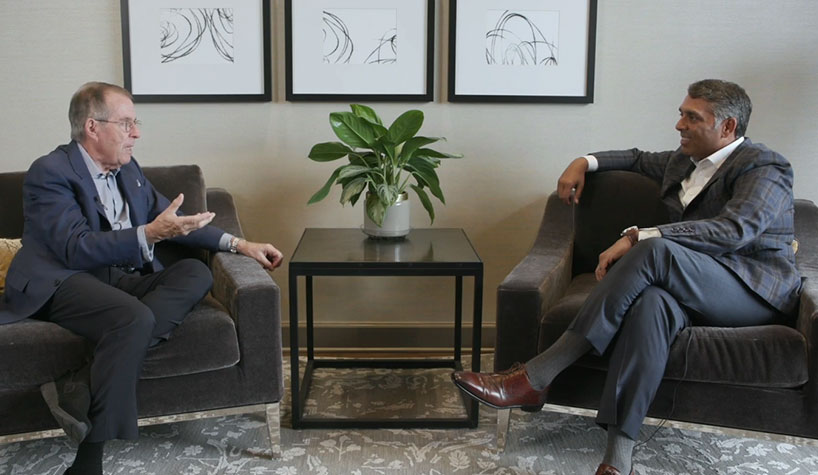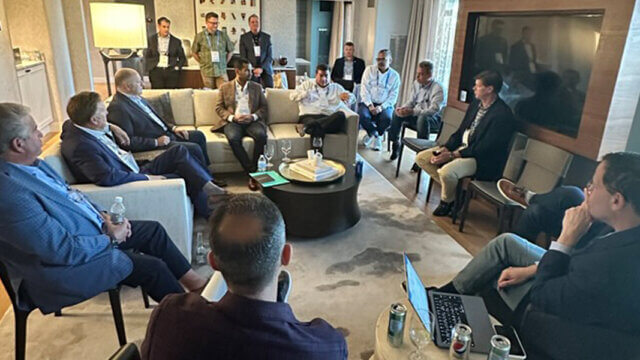NATIONAL REPORT—The third day of AAHOACON20 saw many hoteliers discussing the way forward from the COVID-19 pandemic, the relationship between owners and brands, and the key indicators to look out for.
In a fireside chat between Mit Shah, CEO, Noble Investment Group, and Horst Schulze, president, Horst Schulze Consulting, the Ritz-Carlton founder gave his take on what hoteliers’ priorities should be.
“These are very unusual circumstances, and you have to think differently,” he said, noting that this doesn’t mean the vision should change. “Whatever your vision was, a leader does not give up on their vision. The other thing a leader doesn’t give up on is their values. But, the priorities change.”
Prior to this pandemic, Schulze said, hoteliers had four priorities: “Do the absolute best for the investors, for the guest, for the employee and society.”
Now, he said, “The priority is the hotel, the company, must survive. Without that, none of the other three have anything.
“The number-two priority: How do I keep connected to my customers and supply systems and let them know that I care for them?” he added. “Once we get through this, they should think more highly of me than before. Number three: Make sure you don’t lose your very best employees. Number four: Get rid of the rest of them. If you don’t do it, you won’t have a hotel. You have nothing for anybody… Managers accepted their fiduciary responsibility to make the company successful and, in situations like this, to make sure it survives. You cannot escape how tough this is. This is painful. I cried letting people go—but sometimes that’s necessary and you have to do it.”
Summer Insights
During a session titled “Hotelier Insights: Recovery and Looking Past the Pandemic,” several industry executives shared their thoughts on recent developments in the industry.
DJ Rama, president/CEO, Auro Hotels, said that in the month of June, his company finished with 31% occupancy and July saw 41% occupancy.
Sima Patel, CEO, Ridgemont Hospitality, added, “June actually showed some hope for the recovery for us across our portfolio. In fact, some of our properties did break even that were open by the airport market. However, the first week of July brought a new surge of cases in California and that just has resulted in a pullback for us across our portfolio. And having been in the only two counties in California that closed the earliest and are not fully opened yet, it’s created a lot of uncertainty for us moving forward. We’re just not sure how to forecast the third quarter or fourth quarter.”
Uncertain Future
The other executives shared Patel’s fears about uncertainty.
“My fear is similar to the fears a lot of have: largely related to the uncertainty,” said Justin Knight, president/CEO, Apple REIT. “Not knowing is tough, especially in an environment that’s been as volatile as what we’ve seen over the past several months.”
Kenneth Fearn, managing partner, Integrated Capital, said that his biggest fear is that the industry won’t see a pickup in demand. “Our hotels are city center, so we rely heavy on group business and corporate travel. We have not seen much in those markets to see signs of hope, including governmental travel, which has fallen off the cliff and has, by all accounts, a travel ban through the end of the year,” he said. “Most corporate entities have placed travel bans on similarly through 12/31. So city-center hotels have been very difficult as far as looking for demand.”
“I think suppression of the virus equals recovery. If we can’t get our arms around suppression of the virus, the visibility gets darker and darker,” Rama said.
“As far as hope going into 2021, the best hope I have is that we find a vaccine and an ability to treat and manage this virus,” Fearn agreed. “And number two, that the hotel industry stays united in its messaging… This industry has been decimated and left in an island of isolation. We need to make sure that as a group we stay united and continue with the similar messaging that keeps it in the forefront so the [government] understands what’s going to be required to get us back on the right path.”
Working With Brands
On the topic of new brand standards around safety protocols, Fearn said, “We’ve had very direct and open dialogue about the need for it. So far, it has been well received by our colleagues who are at the hotels, and the guests have been comforted by what they’re seeing as well. To date, it’s all working beautifully.
“The test will be as we start to see rising occupancies, where the pivot goes from there,” he added, noting that one of his properties recently held a wedding that was supposed to have 300 guests. Because of the pandemic, the event only hosted 30.
“Everyone who was there was overjoyed,” he said. “But what happens when you really can start to move things along and you have 300 or 400 people, and how are you going to pull off an event in a manner that makes everyone comfortable and do it in a manner that this industry is known for, which is providing the best service?”
Knight added, “The guests who are traveling now are not necessarily indicative of the guests who will travel in the future. Guests traveling now tend to be less risk averse than those who aren’t traveling now, but they will make up a portion of the traveling public on a go-forward basis.”
Because of this, it makes it hard to know what types of long-term changes might need to be made to brand standards. “We’ve spent a lot of time internally and interacting with the brands, thinking about what the hospitality model of the future might be,” Knight said. “We’ve looked for ways to maintain the value proposition for our guests, recognizing we’re going to be entering into a more competitive environment, while at the same time reducing expenses.”
Apple’s focus has been on services and amenities that are utilized least frequently, but have significant costs associated to them. “For certain brands, that’s caused us to focus on evening socials where the take rate is generally less than 20%, even sometimes less than 10% of total guests staying at a hotel,” he said. “Outside of that, we’re looking at how we might provide the same services but maybe in a different way. There are other areas where guest preferences may change and what they want could be different in a way that actually benefits us from a cost standpoint. And some of that remains to be seen.”
“We are all sitting across the aisle with our brands and saying, ‘What are the pieces that are critical and what are the pieces that are not critical?'” Rama said. “We’re at this pivotal moment right now that we will have to challenge each other with the brand standards and we will have to make some seismic change.”
Key Indicators
The executives shared what key indicators they’re looking at in these uncertain times.
“We’re finding ourselves tracking trends in occupancy over time,” Knight said. “We have a large enough portfolio that we’re able to compare different markets and find the similarities and differences which tend to correlate to that. Because even forward booking pace in today’s environment is less reliable than it used to be, we’re really using our current performance as an indicator of what we might see in the future.”
Consumer confidence is also important. “For me, the big one is consumer confidence index. People need to feel safe to travel again, to get on a flight again,” Patel said.
Patel added that with 50% of the portfolio near the airport, she’s looking at airport traffic. “It picked up in June. However, it pulled back again in July,” she said.
Rama agreed. “[Look at] TSA datapoints for your airports, seeing what the traffic and the trend is of the TSA checkpoint, which is a public knowledge on the web. You can at least see what the movement is for corporate transient,” he said.
Rama added, “We are looking at daily room night pickups for the future… Another one that is interesting is the vacancy office rate. What we’re finding is a lot of the office renewals are coming up and a lot of them are not buying that kind of square footage, which impacts us on corporate transient. And, obviously, unemployment rate, GDP—those are all the usual suspects, but we have to turn over every stone to make sure we can see the visibility for tomorrow.”


